The first major string quartet with more women than men
mainAnthea Kreston’s diary:
It’s the dawning of a new age. The first major international quartet with a ratio which favors women (one could argue the 1927 Galimir Quartet – but this is a subset sibling group – and as soon as they fled to America only Felix remained a professional musician – Galimir Quartet reverted to the acceptable ratio of 4 men to 0 women). A glass ceiling has been shattered, and I couldn’t be more excited and thrilled.
It’s going to be a powerhouse group, with female co-leaders. Vineta Sareika, who has been first violin since 2012, who will now share responsibilities with Suyeon Kim, reverting for her first time time back to the original structure of an Emerson-styled equality of violins, and the penetrating, thoughtful, and world-renowned Harriet Krijgh taking over from the formidable Eckart Runge on cello. The new formation shaves decades off the old line-up, clocking in at 31 and 27 years old, a combined 38 years fresher than the current members.
What does this mean? What does it mean for women? For music? For men? The history of classical music ceiling shattering, in order, was soloists first – from “most feminine” to “least feminine” instruments – think continuum piano…..trumpet. Then there was orchestral breakage – continuum – harp…..percussion – has that actually happened?….conductor. Administrative – competition judges….presidents of orchestra/opera/concert halls….has there been record label president yet? – and educational. Behind the scenes (instrument repair…..instrument makers). Where does composition stand? I don’t, personally, think equality has happened yet. Not totally, not really. Where are we on all of these fronts? What are the other fronts yet to be broken or mentioned?
‘It’s striking that as women have entered orchestras in large numbers in recent decades, the institution of the all-male string quartet has nevertheless continued to persist as something of a norm. Professional orchestras have audition processes governed by unions, committees, personnel manages, whereas quartets are self-governed as a kind of buddy system. That said, some major international quartets that were until recently all-male now have two or more female members, so let’s hope this trend toward more equal opportunity continues.’
Professor Edward Klorman (McGill University, Montreal)
I know that this is a can of worms – and that I am, in no way, an owner of all knowledge. So jump right on in – feathers are going to get ruffled here, I can imagine, but it certainly is an interesting bit of sticky wicket. Let’s poke it a bit with a stick and see what reveals itself.
According to Professor Klorman, there is some historical context for the phenomenon we are talking about. ‘At the time that quartet-playing became popular for amateur players (in the final decades of the eighteenth century), quartets were played virtually exclusively by men. Aristocratic women didn’t play bowed string instruments since they required awkward physical postures that were considered unladylike. Then, in the nineteenth century, there were quartets that were connected to orchestral ensembles (such as the Gewandhaus Quartet), whose members were drawn from the all-male members. The earliest quartet I know of with women members is not until the twentieth century, the Galimir Quartet, which may be a special case since it was Felix Galimir with his sisters. In any event, the institution of the all-male string quartet has a long history and seems to have persisted a surprisingly long time.’
The details are up for grabs, but the basic fact remains – there has been a slow, but increasingly faster tempo of females entering string quartets of all levels, in all parts of the world. There has yet to be a top-ranking international quartet made up of all females (don’t mention Bond). Let’s check it out. And – please contribute in the comments section. Let’s get a good list here. But even more important – let’s look beyond the nitty-gritty, and examine the gender trajectory in string quartets, and in the classical music field at large.
There could be a number of ways of looking at this. There is the “what is a major international quartet” question. For these purposes – let’s say something like: active career of 50+ concerts a year, existence for 20+ years, recording legacy on major labels, and at least one significant tour not on the continent in which they live, every season. There are so many incredible quartets to consider, I will just start here. We can add on, create subsets – but I do believe the premise will remain, no matter how many groups are included. This could be about who we all consider to be/have been Top Tier International Quartets. But – instead of that – it would be wonderful to have a meaningful dialogue about the trends, and how we all see classical music changing in terms of gender.
Here is a list – after the name of the group, a ratio of women/men at highest ratio in group. If all-men, it will say “0”. Year of first female membership, followed by name(s) of female member(s).
Quartets:
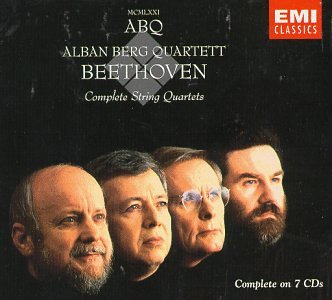
Alban Berg: 0
Amadeus: 0
Artemis: 3/1, 1994
Natalia Prishepenko, Vineta Sareika, Anthea Kreston, Suyoen Kim, Harriet Krijgh
Belcea:2/2, 1994
Corina Belcea, Laura Samuel
Borodin: 0
Borromeo: 2/2, 1989
Yeesun Kim, Mai Motobuchi,Hsin-Yun Huang
Brentano: 2/2, 1992
Serena Canin, Nina Lee
Budapest: 0
Busch: 0
Cleveland: 1/3, 1969
Martha Strongin Katz
Danish String Quartet: 0
*Quartetto Italiano: 1/3 1945 (first female) Elisa Pegreffi
Ebene: 1/3, 2017
Marie Chillemme
Emerson: 0
Guarneri: 0
Hagen: 2/2 (sibling), 1981
Angelika Hagen, Annette Bik, Veronika Hagen
Jerusalem: 0
Juilliard: 2/2, 2016
Astrid Schween (interestingly, formerly of the all-female Lark Quartet), Areta Zhulla
Kolisch: 0
Kronos: 1/3, 1978
Sunny Yang, Jean Jeanrenaud, Jennifer Culp, Ella Gray
Kuss: 1/3, 2002
Jana Kuss
LaSalle:0
Pacifica: 2/2, 1994
Simin Ganatra, Katherine Lockwood
Takacs: 2/2, 2005
Geraldine Walther, Harumi Rhodes
Tokyo: 0
Turtle Island: 0
Vermeer: 0
Others to consider:
Lark: 4/0
Cassat: 4/0
Penderecki: 2/2
Alexander: 0
Arditti: 0
Aviv: 2/2
Brodsky: 1/3
Calder: 0
Daedalus: 3/1
Enso: 2/2
Galimir Quartet: 3/1 (sibling)
Fine Arts: 0
Jasper:2/2
Jupiter: 2/2
Meccore: 1/3
Melos: 1/3
Miro:1/3
Modigliani: 0
Muir: 1/3
Orford: 0
Orion: 0
Pavel Haas: 2/2
Shanghai: 0
St. Lawrence: 1/3
St. Petersburg: 1/3
Vogler Quartet: 0
Ying: 1/3 (sibling)
For further information, The Cambridge Companion to the String Quartet, edited by Robin Stowell, has some interesting historical background related to this topic.
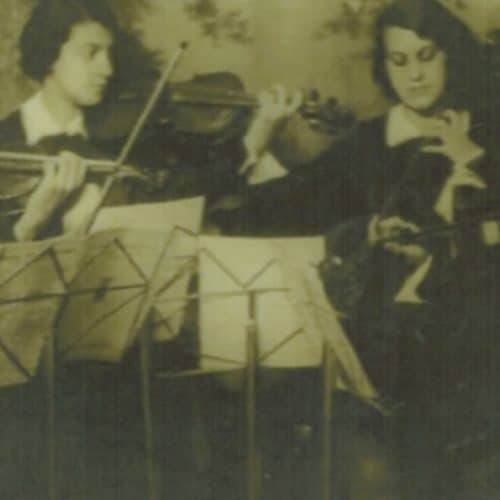
See also here.

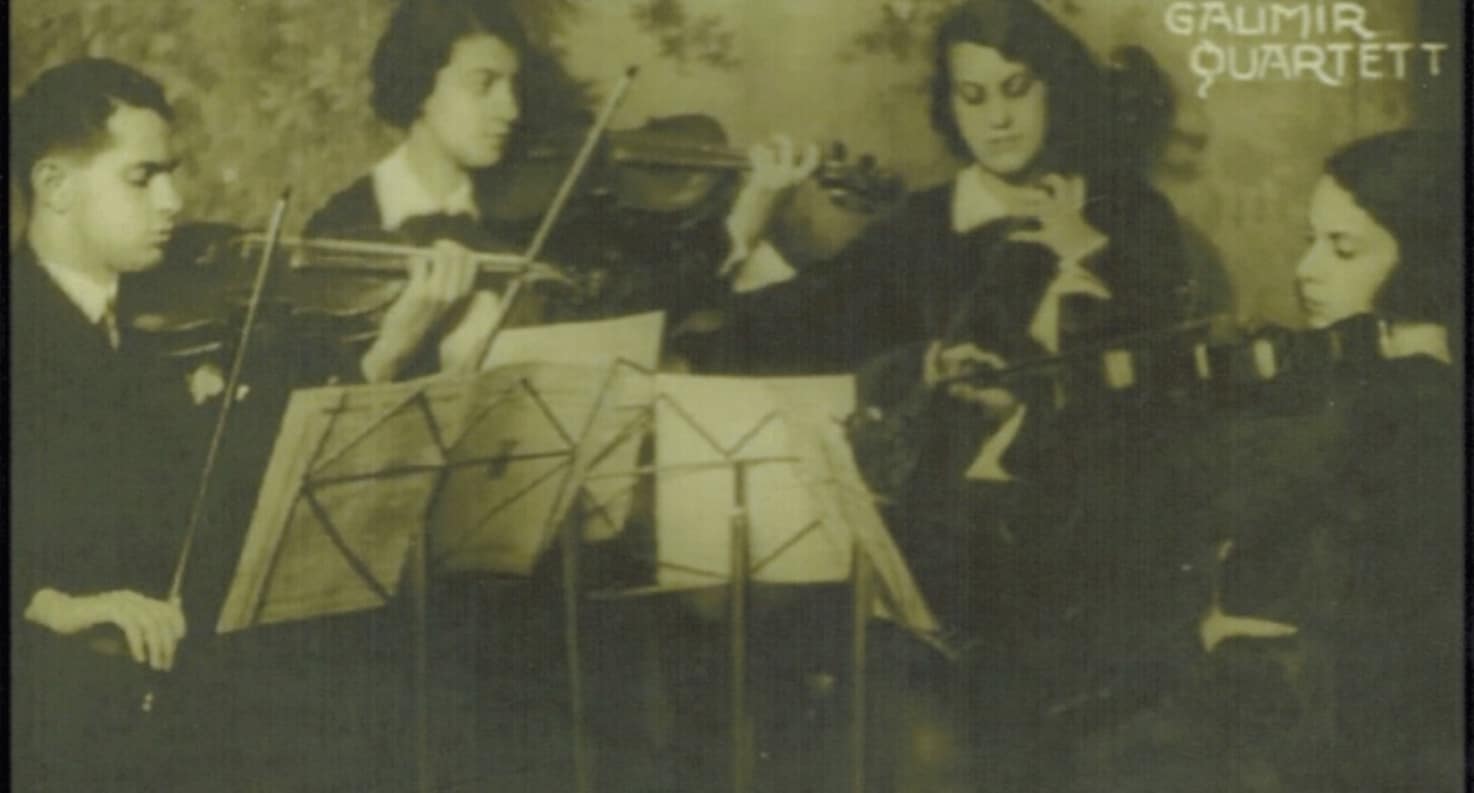
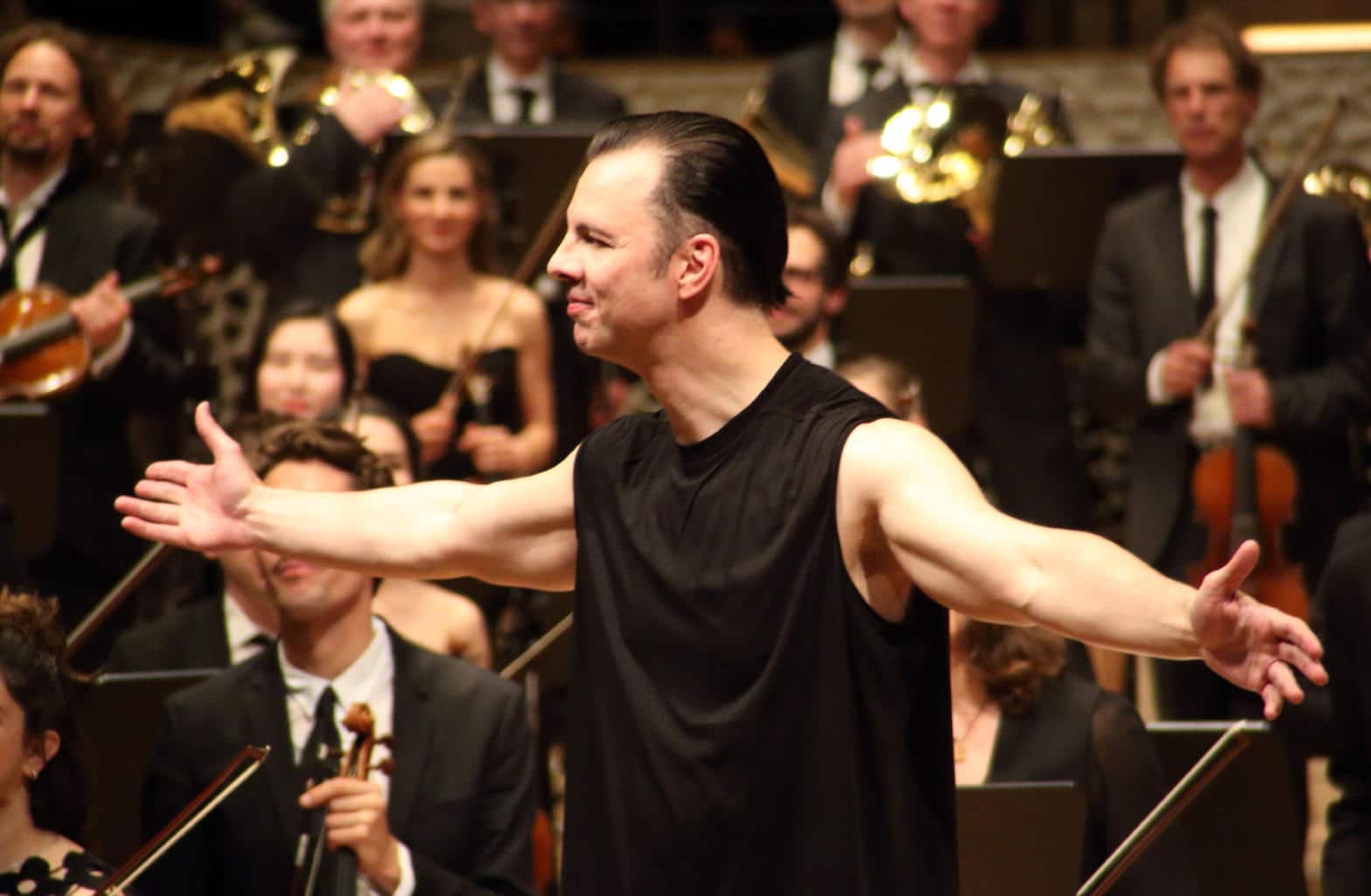
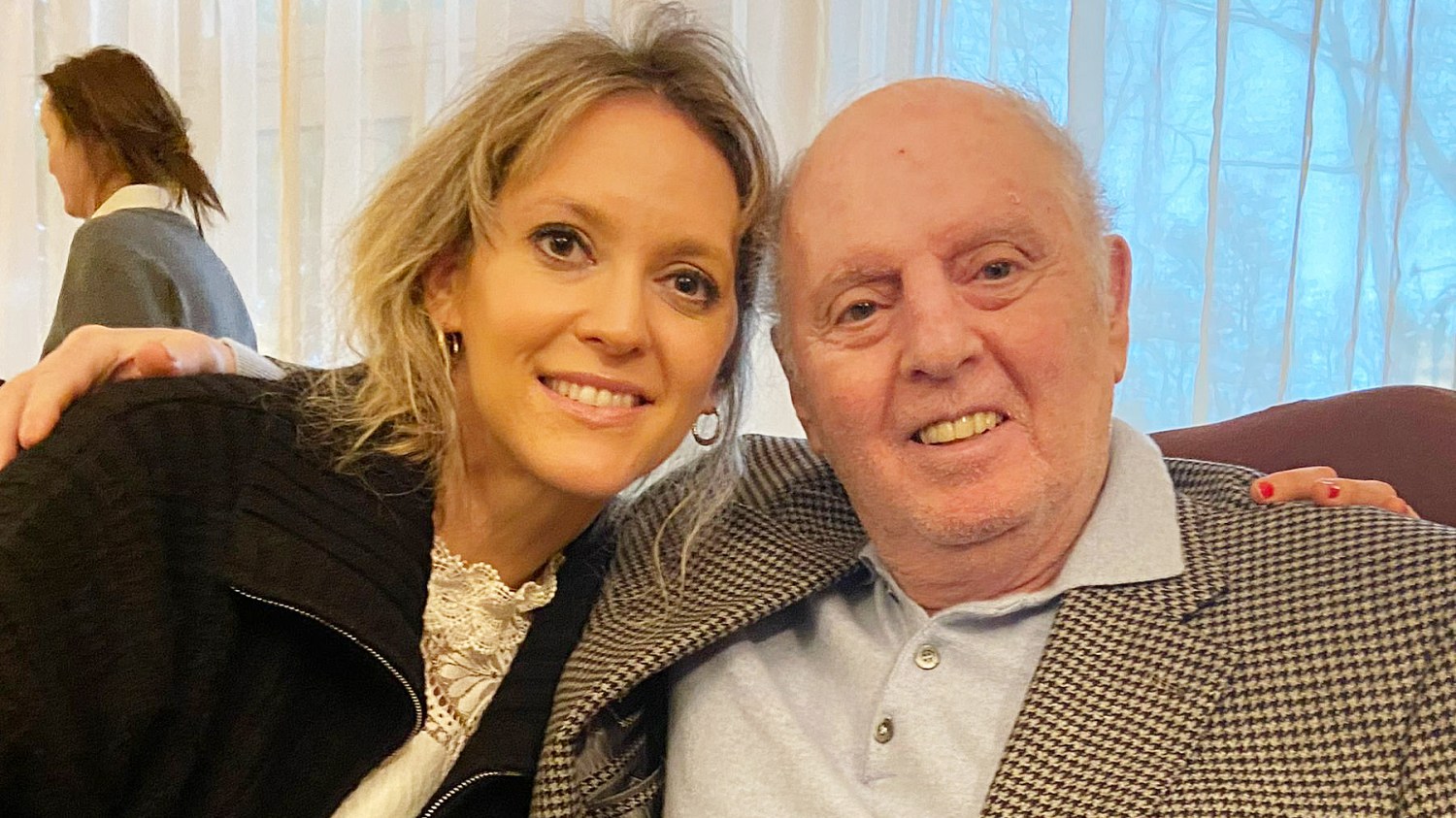
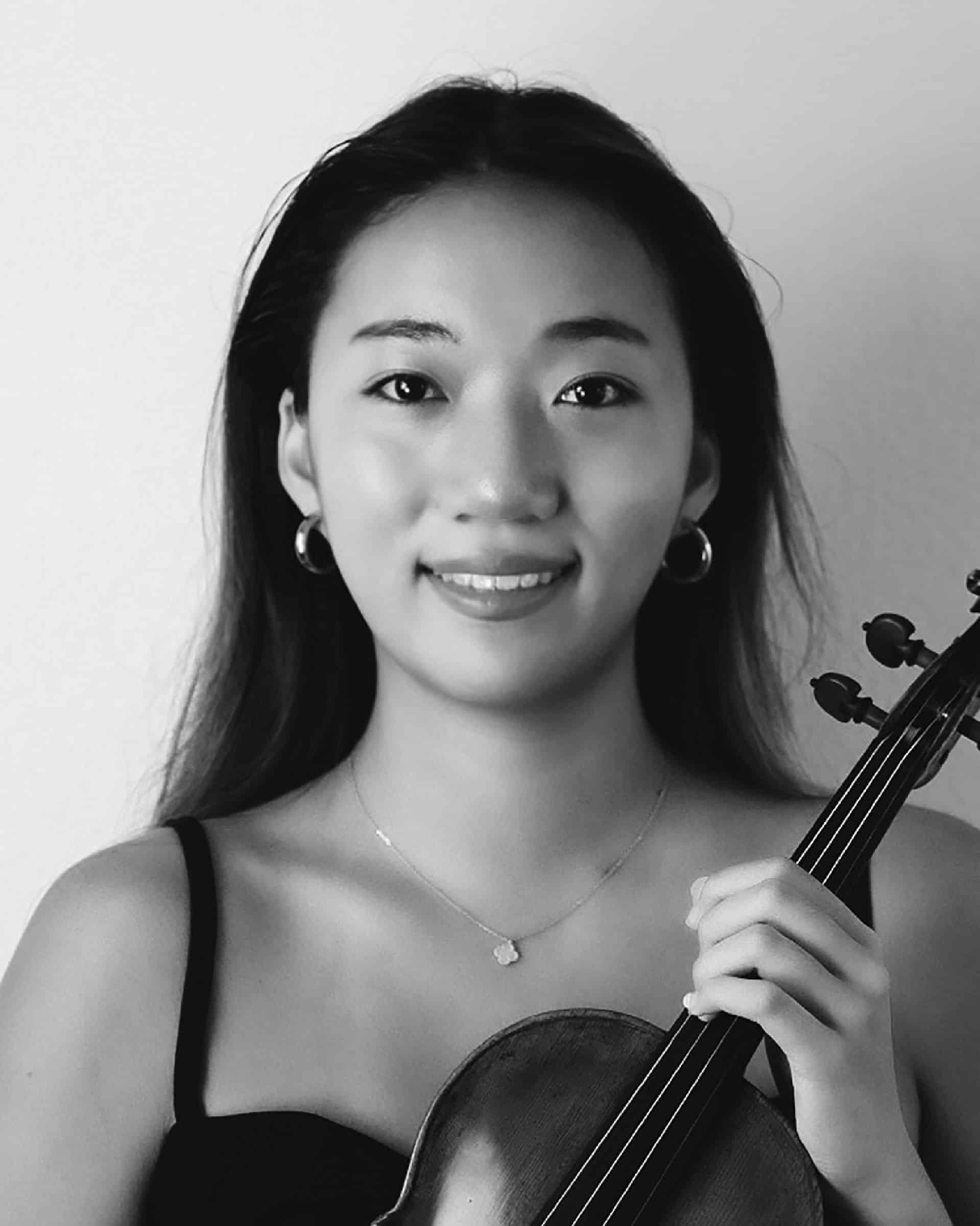
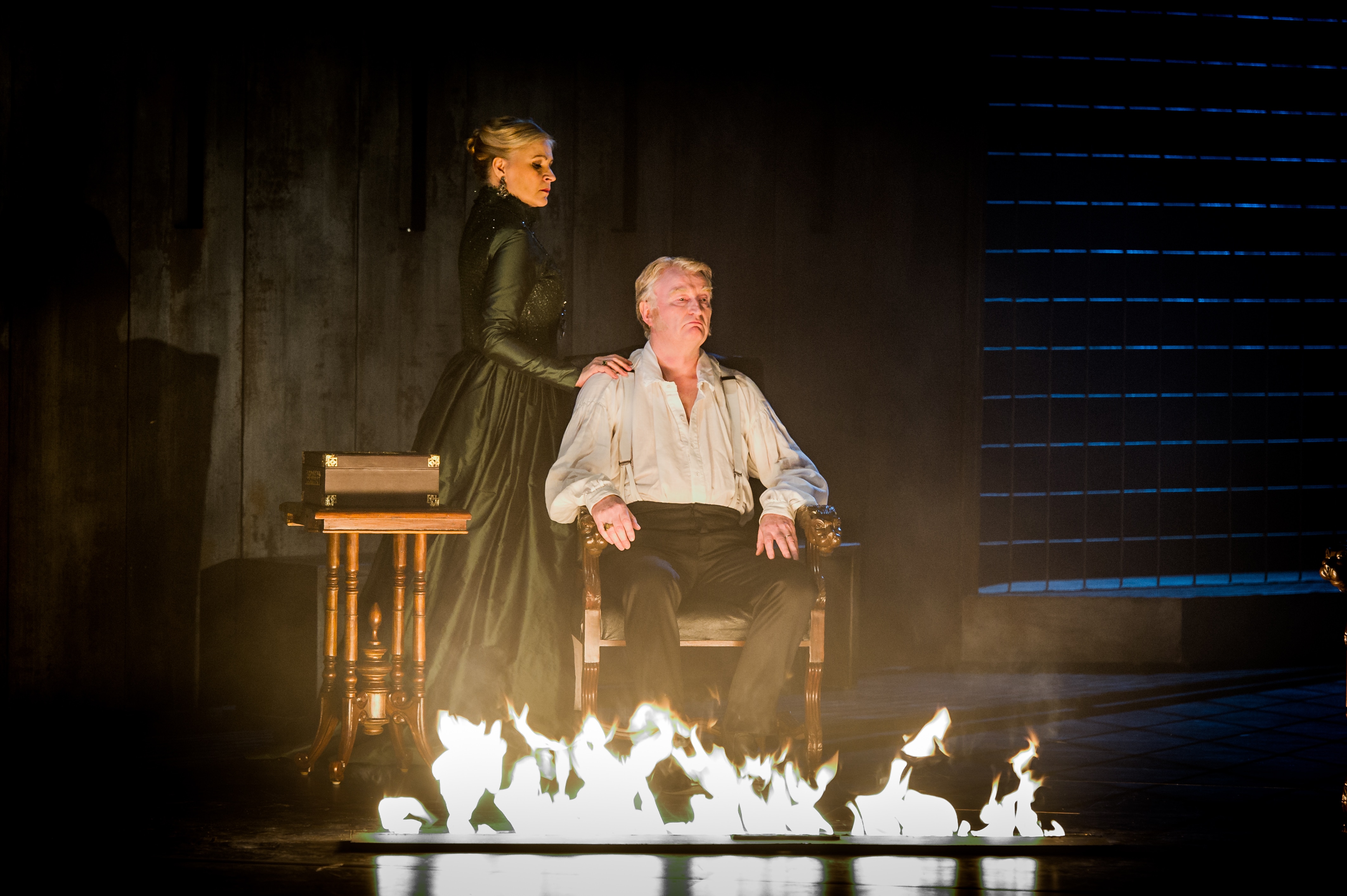
Isabel Charisius was Violist in the Alban Berg quartet for some years.
Yes good point. I will add both of these into a list. Thanks!
My Alma Mater (U of Wisconsin) published a book on the History of the Pro Arte Quartet, now in its 100th year (obviously with membership changes from its Belgian founders.) It was a boys’ club certainly through the 1960s (when I studied with its members.) The original Pro Arte, stranded in America because of WW II, was taken on as “Artists in Residence”, a new concept at the time. The leader at the time I was there, Rudolf Kolisch, wanted his wife to join the quartet as the violin 2 when there was a vacancy as she was capable but the university had a rule about spouses not being in the same academic department. My teacher, Robert Basso, was hired instead. There was a fuzzy distinction difference at the time between being an “Artist in Residence” as the Pro Arte was, and being a “professor” which Kolisch also was. [The book explains the difference, but the logic was hard to follow.] Long after I was gone from the University, the wife of violist Richard Blum did join the Pro Arte. I don’t know what university rule changed to permit this. I believe both are retired now. BTW I was not a music major, but when I auditioned for the university orchestra, the conductor said “you need lessons, but I need violinists!” He arranged for me to study violin as an elective.
Currently, it’s two women, two men
Possibly not ‘international’ but the Zorian quartet, formed in the early forties and named after their first violinist Olive Zorian was all female. They were considered good enough to premier works by Britten and Tippett, and Olive Zorian was an early Aldeburgh stalwart.
Excellent…..
Colorado string quartet was only women!
Good. Thanks. I remember John Largess (Miro Quartet) played with them for a time as well – maybe it was a sabbatical? Can’t remember….
I don’t think that happened…
It did – he used to be my room-mate….
Nobuko Imai was violist in the Vermeer Quartet back in the 70s for many years
Yes…..where were you when I was doing my research? I could have used a hand! Thanks for this.
Didn’t see it in any other posts but could’ve missed them. Just to be safe – Doric Qt. Violist is a lady.
Sorrel Quartet, Colorado Quartet, Elias Quartet, Albion Quartet, Quatuor Zaide… Rebecca Clarke was regularly playing in all-female and mixed quartets before the First World War. Marjorie Hayward led the English String Quartet in the 1910s (the English String Quartet has consistently had female members since its inception), the Virtuoso Quartet in the 1920s and her own Hayward Quartet (3 women, 1 man) after that. Someone has already mentioned the highly significant Zorian Quartet.
It’s tempting to focus mainly on the Central European quartet tradition and its US offshoots, but that will inevitably offer a skewed picture.
Great – want to add and alphabetize them in a document? You can send it to me. It’s great to have this list. Thanks!
Cavani….
Very interesting to learn about these ensembles, and I look forward to reading more about them.
Would you say that there was more participation by women in England than on the continent? Did this have something to do with music schools for girls (such as St. Paul’s)?
Anyone remember the now defunct Lark Quartet?
Oslo String Quartet: 1/4 – https://www.stringquartet.com/my-blog/
Vertavo Quartet: 4/4 – http://www.vertavo.com/
The Cavani Quartet was also originally 4/4
The Hollywood Quartet is regarded as the first American-born chamber music group to rise to international prominence. Cellist Eleanor Aller was married to first-violinist Felix Slatkin. They were parents of conductor Leonard Slatkin.
Current quartets include the Grammy-winning Parker Quartet, with violist Jessica Bodner. Previously, Karen Kim played second violin. The award-winning Dover Quartet includes violist Milena Pajaro-van de Stadt.
Nobuko Imai was in the Vermeer quartet for a bit, so they’re not quite a “0”.
I wish the new Artemis great success!! As a founding member of the St. Lawrence I enjoyed making music in a group that started with 2 men and 2 women. I equally enjoyed playing in the quartet when
it changed to be a group with 3 men and one woman. I think we are at a time when gender matters much less than in the past in this art form. Progress! As Director of the Banff International String Quartet Competition we have seen groups of all formations. Our last competition had 3 winning quartets (Rolston , Castalian and Tesla, with women in the first violin chair. Tesla alternates between first and second so has a female leading half the time..). If one looks at the first competition in 1983 the all female Colorado won. There have been other all female quartets win . What is interesting is to see the photo of the all male jury in 1983. In 1983 that was not unusual. While this 1983 jury was incredibly distinguished, today such an all male jury would not be considered. Times change. This page links to the history of the competition. Enjoy. https://www.banffcentre.ca/bisqc-history
http://www.bisqc.ca
Barry Shiffman
Barry – this is a wonderful overview of recent quartet history! Thank you for taking the time to share it.
Thanks Patriarchy!
Arcanto Quartet 2/2. Antje Weithaas, violin,
Tabea Zimmermann, viola.
Vertavo Quartet 0/4: Øyvor Volle – violin • Annabelle Meare – violin Berit Cardas – viola • Bjørg Lewis – cello
Thank you Paavo♥️35 years together
The Colorado Quartet has been a ground-breaking ensemble for nearly three decades. Catapulted onto the scene by back-to-back wins at the Banff International String Quartet and Naumburg competitions, it was the first all-women quartet to attain international stature. The first female quartet in history to perform the complete Beethoven Quartet cycle in Europe and North America, its recording of the cycle will be complete in 2010 on the Parnassus label. Of the Late quartets, Fanfare Magazine said:
The questions is why the outstanding Colorado Quartet was never given a tenured position at any university or music conservatory … They were truly outstanding.
I believe they had a short stint before they retired at the University of Connecticut.
Not tenured ..
More women than men. Sounds sexist to me. Have to get on to the equality commission immediately!
Please don’t forget about the wonderful Aizuri Quartet! Winner of the 2018 M Prize. 0/4. Their debut album “Blueprinting” is nominated for a 2019 Grammy Award. https://www.aizuriquartet.com/
Vertavo String Quartet!
sister act! I was there when they won the pubic vote at the Melbourne competition
Had to LOL at “the pubic vote” 😀
Has the Los Angeles String Quartet been so forgotten? Led by Paul Shure, an original member of the Hollywood SQ, it featured Bonnie Douglas as 2nd violin (a Persinger pupil, as were Menuhin, Ricci, and Bustabo), Janet Lakatos on viola and Armand Kaproff on cello (a member of Toscanini’s NBC Symphony). The LASQ recorded lots of Hindemith for GSC in the 1970s and indeed may well have done a complete set of the Hindemith quartets. So list them as a 2/2.
When Joseph Joachim’s quartet would tour England Wilma (Norman) Naruda (Lady Halle) would often take his place if he was otherwise unavailable so that famous quartet could be counted a 1-3 at times
Maud Powell toured with a quartet between solo engagements.
No mention, oddly enough, of the most famous all-women string quartet of the 19th century, that being the Soldat-Roegger Quartet: Marie Soldat-Roegger was a pupil of Joachim and Brahms himself supervised their rehearsals of his quartets; that quartet was formed in 1887 but the reference books indicate there was a second (also all woman) quartet formed in Vienna by Marie Soldat-Roegger.
What I find disturbing about the new configuration of the Artemis is that the two violins will rotate. Without a single exception, every professional quartet I have heard in which the violinists rotate are much more pleasing in one configuration than the other. They end up sounding like two different string quartets. I have learned to avoid such groups, because I don’t like being guaranteed to be disappointed at half a concert before I even walk in.
Right, because The Emerson Quartet are such hacks….
Actually, in my opinion, yes. There have been at least a few great quartet groups in the years since my favored Budapest, but I never liked the Emerson in either of their violin configurations. So in their case, I couldn’t even enjoy either half of their concerts. I tried, but gave up after a few attendances.
More for Anthea’s list:
A glance through the 1898 book Das Streich-Quartett in Wort und Bild yields two all-female quartets. First listed is the Viennese Soldat-Roeger Quartet with Marie Soldat-Roeger, E. Finger-Bailetti, N. Lechner-Bauer, and [Miss] L. Campbell (an American). Their introduction begins with “Just as in every other profession, so also in the arts the “woman issue” begins to play a role…” The other all-female group is the Shinner Quartet of London, with E. Shinner [Mrs. Liddell], [Miss] Lucy Stone, [Miss] Cecilia Gates, and [Miss] Florence Hennings. Additionally, there is pictured the London Quartet, led by Wilma Normann-Neruda [married to Stir Charles Hallé], in alternation with Joseph Joachim as leader.
Tully Potter lists on page 50 of The Cambridge Companion to the String Quartet the Lucas Quartet (four sisters) as well as the Shinner Quartet, and Wilma Normann-Neruda’s activities in London. On pp. 57 & 58 we encounter in America Maud Powell’s quartet, as well as an all-female quartet led by Olive Mead for 15 years from 1902 to 1917. In Boston was the all-female Eichberg Quartet, formed in 1878 and led by Lillian Shattuck for 15 years. Potter notes that “her colleagues changed several times, owing to the usual pressures on female players in those days.”
Among string quartets performing on period instruments should be noted the Artaria Quartet (3/1), whose repertoire included Verklärte Nacht, the New Esterházy Quartet (2/2) who have premiered several new works and played up through Bartók 1, the Novello Quartet (3/1), the Eybler Quartet (3/1), the Sylvestris Quartet (2/2), L’Archibudelli (2/2), the Salomon Quartet (2/2), Quatuor Mosaïques (2/2), the Smithson Quartet (2/2), the Axelrod Quartet (2/2), and many others whose members will perhaps contribute to this discussion.
I love this comment!!!!! I want to learn more about this. Thanks!
https://escherquartet.com Hard to believe that this group, winners of an Avery Fisher grant, BBC prize, full members of Lincoln Center’s Chamber Music Society and annual Wigmore Hall appearances, is not mentioned. Their founding 2nd violin Wu Jie married founding violist Pierre Lapointe and left to raise kids. Their current 2nd violin Danbi Um is a Curtis grad (Silverstein pupil) who just placed 3rd in the Naumburg (shoud’ve won). Their discography includes the complete Zemlinsky, Mendelssohn quartets among others.Coached by both Guarneri and Emerson members, they’re as good as it gets today.
Chiaroscuro Quartet (2/2):
Alina Ibragimova, violin
Pablo Hernán Benedí, violin
Emilie Hörnlund, viola
Claire Thirion, cello
Cuarteto Casals (1/3):
Vera Martínez Mehner, violin
Abel Tomàs Realp, violin
Jonathan Brown, viola
Arnau Tomàs Realp, cello
From the names listed on your “Chiaroscuro Quartet (2/2)” it looks like actually 3/1.
Correct. I ran out of fingers to count on.
No mention of the all-female Moscow String Quartet. They were based in Denver for many years (where a documentary about them was produced) and have become respected interpreters of music by contemporary Russian composers, including Schnittke and Gubaidulina.
Indeed. I had the privilege of working as an assistant engineer on one of their recordings and they were marvelous. It was almost as if we were recording one person instead of four, so effortless was their communication. Nor was it my first experience with an all-female quartet, having recorded the Cassatt a few years earlier.
The New Zealand String Quartet currently has 3 women, and started life in 1987 with four. The line up has changed over the years with no fuss. There have been some men over the years as many of our women have been busy being Prime Minister, Governor General, Supreme Court Justice and suchlike.
Yes, was shocked to see NZSQ wasn’t mentioned since they’ve been around for over 30 years, recorded for Naxos plenty of times, and perform all over the world! Their second violinist came on at 27… The title of this article is misleading.
He is obviously ignorant of the Colorado and Lark Quartets, gender-discriminating groups that were all female, refusing to hire males. Only females get away with that. And their presence does not improve any group. It may not always detract, but it adds nothing, musically speaking. And women playing harp are almost inevitably weaker, as it takes size and strength to produce orchestral sound, like most instruments.
Priceless.
The fact no one wants to confront: There are no majority transgendered string quartets!
Petersen Quartet- who started with a fantastic female leader, Ulrike Petersen! And of course Armida Quartet 2/2…..:))))Greetings and best wishes!!!!
Cypress String Quartet, 2/4 http://cypressquartet.com/
The Carmel quartet (3 women) should be added to the list.
It is fairly simple. Outstanding male musicians persue whatever career they like (conductor, quartet,…) while their wives have jobs with more regular hours so that the kids don’t have to raise themselves. How many men would stay home to look after the kids while their wife travels the world?
Mine does….
I think, this is a fundamental point. This is a basic, world-wide gender inequality.
Yes. The equally valid question is: How many women at the end of the day (pun intended) really want a man, who wants to stay home to look after the kids? Always takes two to Tango…
As a founding member of the Cypress String Quartet, I’d like to think that we should be added to any list that is looking at female/male ratios. For 20 years, we had at least 2 females in the group (first violin and cello) at all times. ( For 3 years, there were 3 females–first violin, viola and cello). Cecily Ward, violin. Ann Gregg, viola. Jennifer Kloetzel, cello.
Jennifer! Absolutely! This list is far from complete and we all need to do it together. Cypress was an amazing group. I will try to re-compile when I have the next moment.
https://www.quatuorvoce.com
Quartetto Italiano! Woman second violinist who was married (at different times) to the first violin or the cellist.
First major quartet with a woman, I think….
Hi, Anthea!
Based on the criteria you listed for consideration, I noticed one significant omission: the San Francisco based CYPRESS STRING QUARTET, which was active for 20 years (disbanding a few years ago) with no less than two women (Cecily Ward, 1st violin; Jennifer Kloetzel, cello) through their entire run, and I believe one of their violists in their early years was a woman (i.e., three women served in that quartet for a time). The Cypress Quartet performed internationally with over 100 appearances annually and recorded at least 15 albums, including a highly acclaimed complete set of the Beethoven quartets, which they took on tour through Europe in their final year together. I continue to hear their wonderful recordings on SiriusXM. Their greatest impact, in my opinion, was their contribution to the string quartet repertoire with over 30 commissions or premieres and recordings of those great new works, among them most notably were several quartets by Elena Ruehr (3) and Jennifer Higdon (1) – two great composers who just happen to be women. Just thought I’d add this great quartet to your list!
Fantastic!!!
Who cares ! I listen to the music. Please, people get off the women/Asian/ black/whatever PC obsession you are on ! Listen ! do not WATCH the music!!
Yes of course this is the goal! But, like any tour through history, the travel from all-white male to “other” is a worthy topic for consideration, and is important for a role model situation for future generations.
When I attend a performance I both watch and listen. Frankly, I want to see among the players the occasional person like me!
Rusquartet -three female players
Schoenberg Quartet(33 years of which the last 19 years 2/2)
I look forward to the day when the gender composition of a quartet is about as relevant and of interest as where they did their study.
We are nearly there…..
But we’re obviously not…
Trying…..
No, Anthea; that’s the point. In perpetuating this talk we’re saying that the composition of a quartet is more important than its work. Do we really think it is? Anyone can form an all-female quartet if they so want. There aren’t the same constraints you find in other aspects of the profession.
We’ll get there eventually. (Have you noticed that gay marriages aren’t front page news any more? Neither are black baseball players. Female conductors are still less common, but no longer a source of amazement. And so on…)
I know! Let’s hope it is a smooth transition. It is all very exciting. My girls are proud of their mom, and I get to be interviewed for the “what do your parents do for a job“ 1st grade reports. Makes my day.
As I’ve mentioned before, my mother was a doctor, and when I was a kid (early 70s) people would say “Oh, you mean a nurse.” And I would have to explain that no, she was a doctor. Blew (open) a few minds that way.
About so called gender discrimination:
Isn’t it true, that for most of mankind’s history, pretty much all of it except maybe the last 50-100 years, the majority of people were occupied with two things: making a living and raising kids.
Now biology did kind of dictate in most cases, how the roles should be divided to have a chance being successful at both objectives.
Only now the game has changed and we have options, at least people living in the rich countries of the world.
But isn’t it terribly dishonest to scream “Patriarchy” in some kind of Pavlovian reflex, as our snowflake/entitlement/historically uninformed generations now do, completely ignoring the pressing realities of the past?
Did the miner who had a life expectancy of 40 years want to deprive his wife who was fighting at home to bring at least one of the four infants up to an adult age, did that miner suppress his wife in a patriarchal manner? Or did he do what he could do and had to do, in order to survive?
It’s great that women in the rich western countries are now free to chose. But the fact that they weren’t in the past, doesn’t mean it’s the men’s fault, re patriarchy’s.
No one is saying anything is anyone’s fault. It is just an objective study of gender numbers.
You are talking about ‘fronts’. You are considering yourself being a soldier in a (gender) war.
(It’s saddening to see the lemmings being so easily divided, now among gender lines. the gender equality warfare is the last frontier, of keeping society divided, so it can be controlled more easily. Divide et impera. Poor fools.)
Re: “It’s great that women in the rich western countries are now free to cho[o]se.”
Well, that depends. I would characterise the situation as one Hobson’s choice (everyone must earn money *and* do the domestic chores) superseding a previous one (one person must earn money; the others in the household do the domestic chores). The cost of living in these same “rich western countries” is such that a household with only one “breadwinner” (i.e.: person earning money) is, by and large, no longer economically viable.
It is, of course, wonderful, that sexism in the professions is at an historic low, but there is no escaping the fact that, despite (or due to?) technological advances, there has been no appreciable increase in the average leisure time per capita (the trend towards increased “breadwinner” working hours per household has not elicited a *corresponding* decrease in the hours expended on domestic chores). The aspirations proposed in Bertrand Russell’s fascinating and compelling essay ‘In Praise of Idleness’ are as remote today (if not more so) than they were in 1932 (the year in which Russell wrote the essay).
Indeed, and the really pressing question of our days is that of class warfare and exploitation. Of why the breadwinner’s income did not grow proportionally to the productivity growth, so today we must have two people working full time to maintain a middle class life.
Questions of gender equality are a very nice distraction though, to keep us sheep busy bleating at each other.
Marianne Kneisel String Quartet, all women
Cecilia String Quartet
All female.
2010 Banff 1st Prize
The Primavera Quartet!!!!! all women
The Denver-based DaVinci Quartet hasn’t been mentioned here yet, I think. They had a 24-year career, ending in 2005, and were an all-female group during that entire time. They did recording and touring, and had residencies and regular series performances in both Denver and Colorado Springs.
http://www.playbill.com/article/da-vinci-quartet-disbands
A call-out to the outstanding Arcadia Quartet from Romania with a terrific female first violinist but only founded in 2006 according to their Web site: http://www.arcadiaquartet.com/about.php
Some years ago in Paris I heard them play the most compelling Death and the Maiden I’ve ever heard, and I’ve heard many that just skim the top. These musicians dig in deep to whatever they play, combining passion, intelligence and maturity.
There are just so many groups missing above -argh!!!! Here is another way of looking at it. I compiled these statistics on the plane to Brussels just now. I looked at who was playing in Berlin at the three major halls – Boulez, Philharmonie and Konzerthaus. 200 people on front of a Berlin audience in the span of 9
Months, 41 are women. I could do this for Wigmore and Carmegie too, if I have time. Go Tetzlaff! 3 women! I didn’t know this.
Berlin quartet concerts October 2018-June 2019 (9 months), according to Quartett-in-berlin.de
Venues: Boulezsaal, Konzerthaus, Philharmonie
Groups: name, and if play more thank once, counted each time
Gender: total women, total men
Arod (0/4), Takács (2/2), Jack (0/4), Vogler (0/4) (x4), Tetzlaff (3/1!!!), Vision (0/4), Artemis (2/2,3/1) (x3), Mandelring (1/3) (x3), Belcea (1/3) (x3), Casals (1/3) (x3), Goldmund (0/4), Jerusalem (0/4) (x2), Quartett der Staatskapelle Berlin (1/3) (x3), Danish (0/4), Hagen (1/3) (x2), Aris (2/2), Emerson (0/4), Dover (1/3), Philharmonia Quartett (0/4), Schumann (1/3), Varian Fry (2/2), Konzerthaus Quartett (2/2), Quartetto di Cremona (0/4), Ébène (1/3), Heath (1/3), Modigliani (0/4), David Oistrakh (0/4), Arditti (0/4), Michelangelo (2/2) (x2), Diotima (1/3)
41 women 149 men
Total 200 ratio 41/149
The Rumanian quartet Academica, which won the ARD in 1973 and performed extensively until at least 1993 always had two female members.
The original second violinist of the Tokyo Quartet was a woman.
We should be careful not to single out specific quartets here, since a pool of four individuals is not a large enough basis to make claims of sexism.
In a hypothetical world where the supply of outstanding violinists, violists, and ‘cellists were precisely 50-50 between the two sexes (assuming there were no differences in the style of male and female players, and assuming, moreover, that sex had no bearing on the career choices made by these players), the distribution of sexes in quartet X, assuming that it took no account of sex would be modelled by a binomial distribution — specifically, X~B(4,0·5) — under which the probability that it had a precisely 2/2 ratio would be a mere 37·5%. That is to say, we would still expect the majority of quartets to be “unbalanced”.
Among the quartets in our hypothetical world as outlined above, we would expect the following distribution of ratios:
0 women / 4 men: 6·25%
1/3: 25%
2/2: 37·5%
3/1: 25%
4/0: 6·25%
In other words, in our hypothetical world, we would *still* expect 31·25% of quartets (almost a third!) to be biased in favour of men (of course, another 31·25% would be biased in favour of women).
One final observation: if a quartet’s touring budget precludes having a single hotel room for each player, it is, pragmatically speaking, preferable for the quartet to be all-male, all-female, or 2/2. That way, four players can stay in two twin rooms without anybody having to share with a member of the opposite sex.
Hi! Nice stats! I looked at the 50 quartet concerts played this season at the 3 main Berlin halls. 200 musicians. 41/149 split. Quartet musicians hate sharing rooms. We are a 2/2 group and it has never happened…..but I used to love sharing when I toured with my husband!
I am loving your stats. Totally. I did Berlin, Wigmore, Carnegie stats for Oct 18-June 19: women/men
Berlin (top 3 halls)
0/4 36%
1/3 46%
2/2 17%
3/1 4%
4/0 0%
Wigmore
0/4 10%
1/3 60%
2/2 20%
3/1 10%
4/0 0%
Carnegie
0/4 27%
1/3 32%
2/2 27%
3/1 13%
4/0 0%
These are interesting figures. At a glance, the Wigmore 1/3 figure (60%) strikes me as particularly remarkable, and awoke fond memories of two excellent concerts by the Pavel Haas Quartet I have heard in recent years at the Wigmore (I am fairly sure they were 1/3 and not 2/2 on both occasions when I heard them, although I must confess I did not pay particular attention to the sex of each individual player).
One question: are these figures per quartet or per performance? (i.e.: if quartet X performed somewhere twice, are they counted twice?)
I counted them twice if they played twice – berlin especially has a lot of repeats….
Maybe I missed, but I don’t see Esmé Quartet mentioned in the comments above. Esmé is an all-female quartet, the winner of 2018 Wigmore Hall International String Quartet Competition: the members are Wonhee Bae – Violin I, Yuna Ha – Violin II, Jiwon Kim – Viola, and Yeeun Heo – Cello. http://www.esmequartet.com
A related survey:
https://www.charlespetzold.com/blog/2021/08/The-Ruth-Bader-Ginsburg-Criterion-for-String-Quartets.html